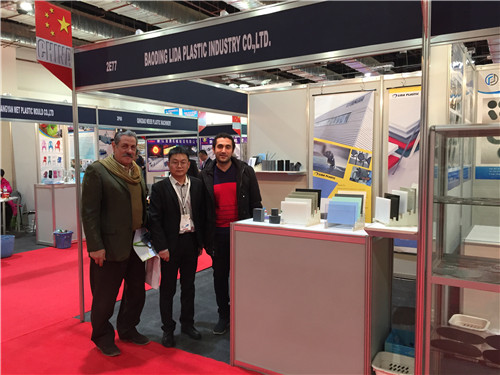Dec . 01, 2024 18:39 Back to list
cpvc plate
Exploring the Versatile Applications of CPVC Plates
Chlorinated Polyvinyl Chloride (CPVC) has gained significant popularity in various industries due to its outstanding properties and versatility. Among its many applications, CPVC plates stand out as an essential component in numerous fields, from construction to manufacturing. This article explores the characteristics of CPVC plates, their benefits, and the various industries that utilize them.
What is CPVC?
CPVC is a thermoplastic produced by the chlorination of PVC (Polyvinyl Chloride). This process enhances the material’s thermal stability and chemical resistance, making CPVC suitable for higher temperature applications compared to regular PVC. CPVC plates are solid sheets made from this material and are known for their durability, resistance to corrosion, and ability to withstand corrosive substances.
Key Properties of CPVC Plates
1. Chemical Resistance One of the most notable features of CPVC is its resistance to a variety of chemicals, including acids, bases, and salts. This makes CPVC plates particularly useful in environments where exposure to harsh chemicals is common.
2. High-Temperature Resistance CPVC can withstand temperatures up to 200°F (93°C) without losing its structural integrity. This characteristic allows CPVC plates to be utilized in applications that require thermal stability.
3. Low Flammability CPVC has a low propensity to ignite and burn, making it a safer option in many industrial settings. Its self-extinguishing properties reduce the risk of fire, which is a critical factor in material selection, especially in construction and manufacturing.
4. Easy to Fabricate and Install CPVC plates can be easily cut, shaped, and assembled, making them convenient for various applications. The ease of installation can lead to reduced labor costs and more efficient project timelines.
cpvc plate

5. Lightweight CPVC plates are relatively lightweight compared to materials such as metal or concrete. This property not only facilitates easier handling and transportation but also reduces the overall weight of structures where these plates are utilized.
Applications of CPVC Plates
1. Construction In the construction industry, CPVC plates are commonly used in building materials, such as walls and roofing systems. Their durability and resistance to moisture make them ideal for both residential and commercial applications. CPVC is also utilized in plumbing systems, where its ability to handle hot and cold water adds to its utility.
2. Chemical Processing Due to their chemical resistance, CPVC plates are favorable in chemical processing plants. They are used to line tanks, build containment walls, and create surfaces that can withstand aggressive chemicals, thus ensuring safety and compliance with regulations.
3. Electrical Insulation The electrical properties of CPVC make it suitable for applications requiring insulation properties. CPVC plates can be used in electrical panels, switchgear, and other components to enhance safety and function.
4. Food and Beverage Industry The sanitary properties of CPVC make it a suitable choice in the food and beverage sector. CPVC plates are utilized in the construction of food processing equipment, ensuring that they resist corrosion from various components used in food production.
5. Marine Applications CPVC’s resistance to saltwater corrosion makes it an appropriate material for marine environments. It can be used in boat construction, docks, and other marine-related infrastructures, ensuring longevity and resilience against harsh conditions.
Conclusion
CPVC plates offer a wide array of benefits that make them an invaluable asset across different industries. Their exceptional properties, including chemical resistance, high-temperature stability, and lightweight nature, allow for diverse applications ranging from construction to chemical processing. As industries continually seek materials that combine durability with safety, CPVC plates are undoubtedly positioned as a top choice for future innovations. The ongoing development in CPVC technology promises even more exciting applications and advancements, solidifying their role in modern engineering and manufacturing practices.
-
High-Quality PPR Pipes and Fittings Durable ERA PPR & PVC PPR Solutions
NewsJul.08,2025
-
Black HDPE Cutting Board - Durable, Non-Porous & Food Safe HDPE Plastic Cutting Board
NewsJul.08,2025
-
High-Quality CPVC Panel Durable HDPE & PVC Panels Supplier
NewsJul.08,2025
-
Double PE Welding Rod Supplier - High Strength, Durable & Versatile Welding Solutions
NewsJul.07,2025
-
High-Quality PVC-O Pipe Supplier Durable 75mm PVC Pipe & Connections Leading PVC Pipe Company
NewsJul.07,2025
-
HDPE Drainage Pipe Supplier – Durable & Corrosion-Resistant Solutions
NewsJul.06,2025

